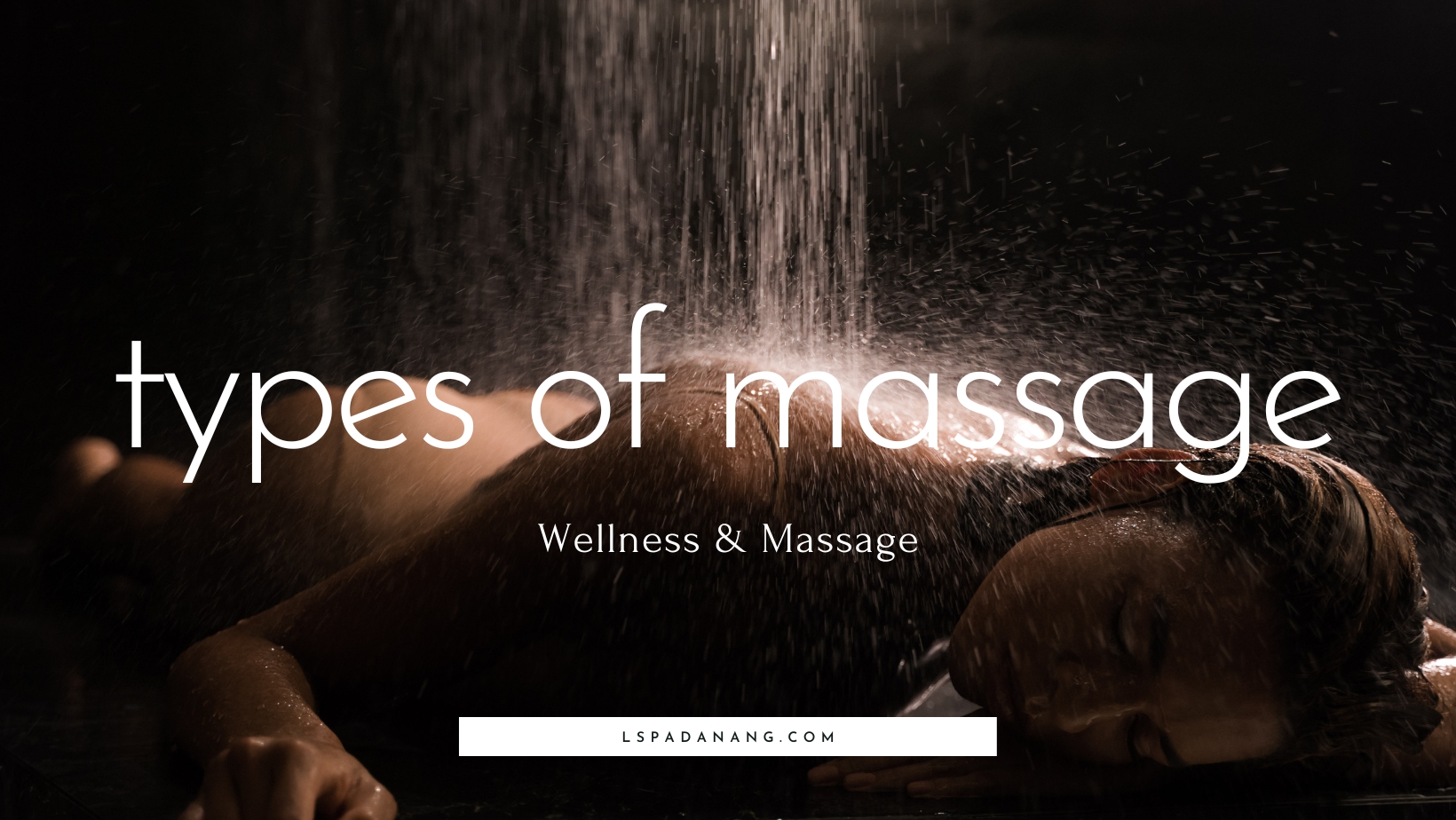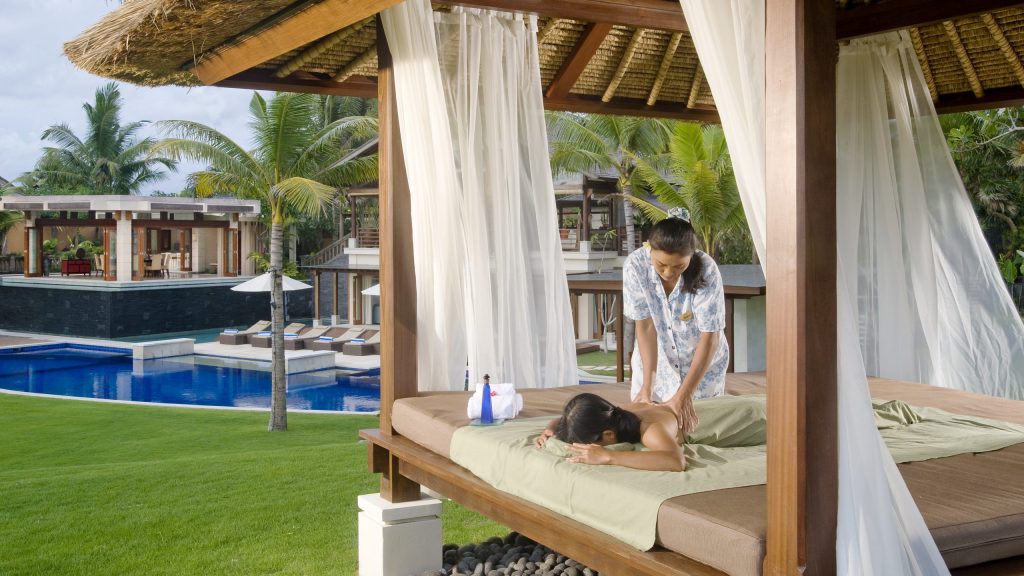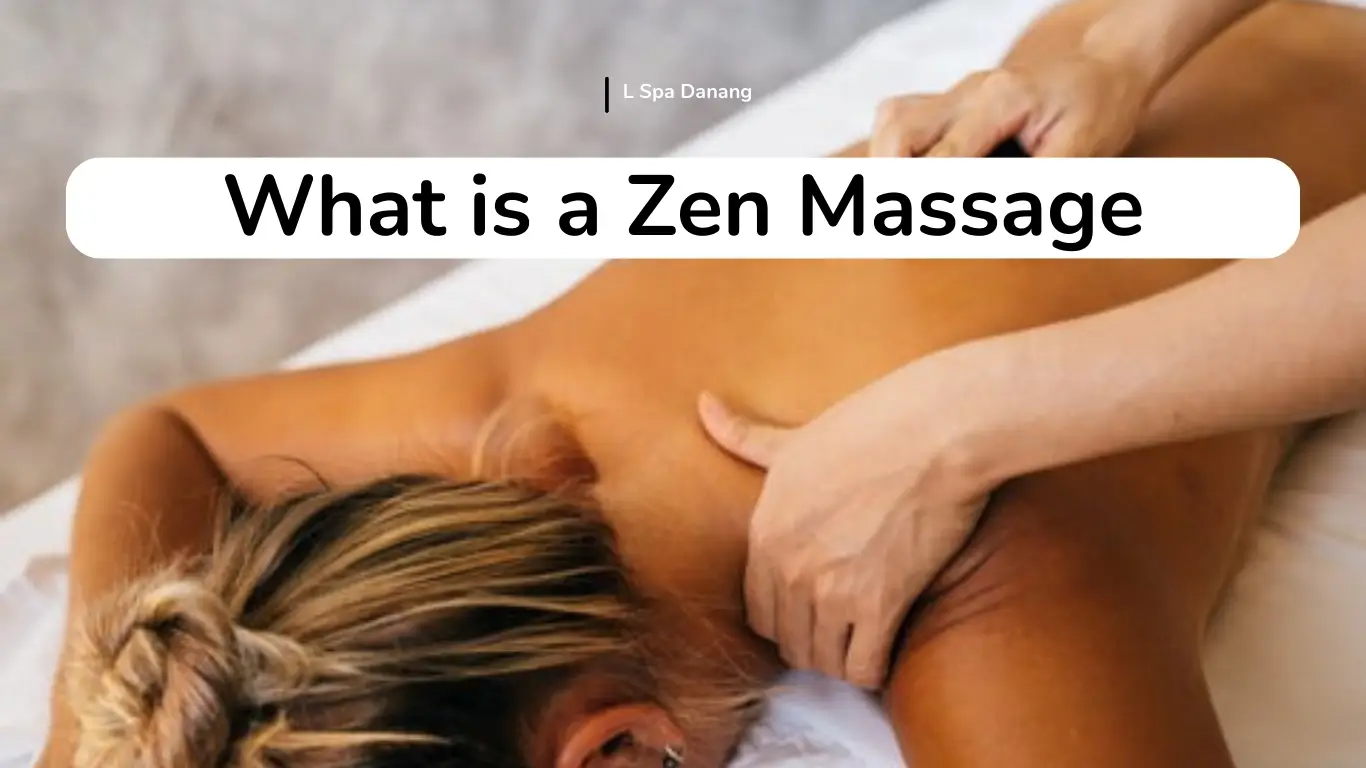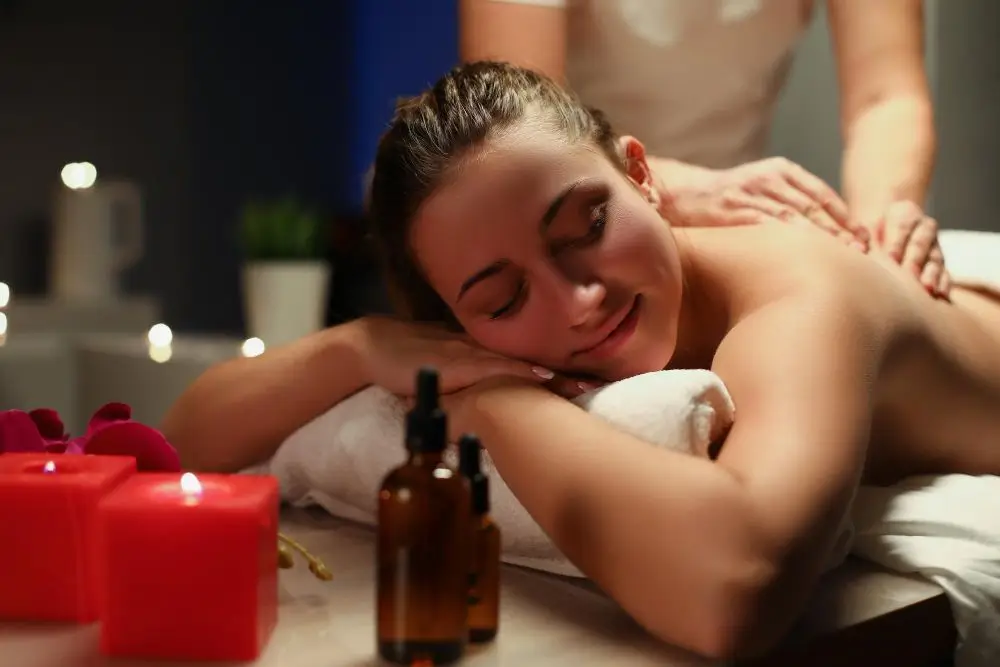Russian Massage, a distinctive therapeutic practice with roots in traditional Russian banya rituals, has gained recognition for its unique techniques and holistic benefits. Originating from the intersection of wood, fire, and water elements, Russian Massage involves specialized strokes, stretches, and movements designed to promote relaxation and overall well-being. In this exploration of Russian Massage, we delve into its history, techniques, potential benefits, and considerations for those seeking this rejuvenating and culturally inspired form of bodywork.
While L Spa doesn’t offer Russian massage, discover our range of rejuvenating body therapies inspired by global traditions at L Spa Da Nang.
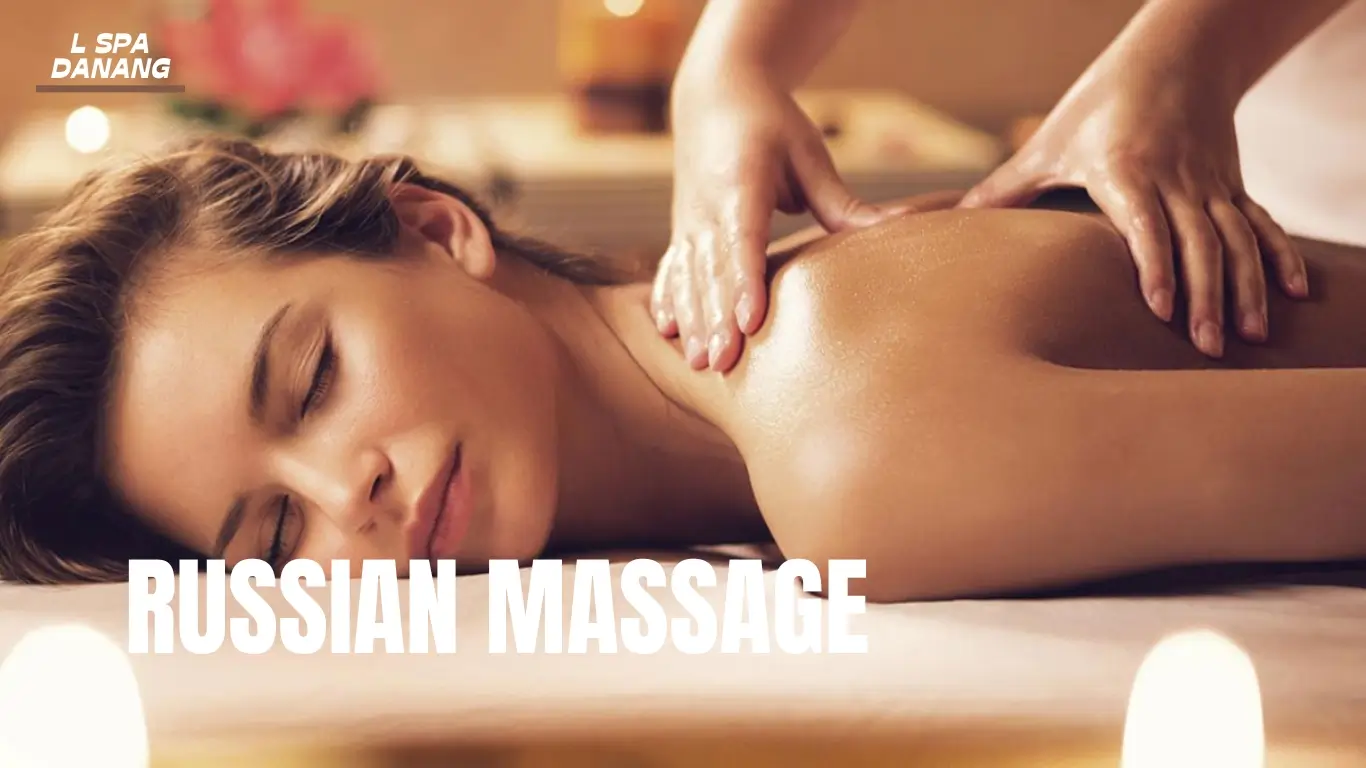
What Is Russian Massage?
You might be familiar with the traditional Russian massage style known as “venik” or “twigging.” During this treatment, clients lie face down while two practitioners gently and rhythmically strike them with water-softened oak or birch branches. The impacts and friction generate body heat, promoting increased circulation. This distinctive massage technique has gained popularity in recent decades, appealing to both Russians and non-Russians.
Venik treatments are available at Russian steam bath houses known as “banyas.” Before their massages, many clients indulge in hot baths and steam rooms, followed by a refreshing plunge into cold water baths. This traditional practice may have originated as a means for people to adapt to the cold Russian winters.
Yet, a contemporary approach to massage originating from the same region has gained popularity. Introduced to Russia in the 1800s and refined by the former Soviet Union, modern Russian massage shares similarities with sports massage, reflexology, and point massage. Known for enhancing nervous system function, facilitating respiration, and boosting immune function, this style of massage offers a blend of traditional techniques with modern therapeutic benefits.
Russian massage therapists employ a distinctive approach, utilizing slower and gentler movements compared to conventional sports massage practitioners. They incorporate friction to generate internal body heat and enhance circulation. Additionally, Russian massage involves techniques such as vibration, slapping, and kneading to effectively release tension in muscles and other soft tissues.
Health Benefits of Russian Massage

Stress and Anxiety
Russian Massage serves as a modality aimed at triggering the release of endorphins. This process not only effectively reduces stress but also revitalizes both the body and mind, offering relief from anxiety. Moreover, the method contributes to tension relief by activating and regenerating the body’s pain-ameliorating system.
Benefits the Atrophied Muscles
Extensive research has confirmed the positive effects of massage treatment, particularly in addressing atrophied muscles. By alleviating joint constraints, it facilitates the restoration of a proper range of movement in strained areas. This non-invasive and gentle technique also proves advantageous for both the elderly and young children.
Metabolism
Russian massage primarily alleviates muscle tension and enhances overall circulation in the body. Consequently, this can lead to an improved range of motion and metabolism. The massage also contributes to promoting proper digestion and breathing.
Respiratory Ailments
Inhale, exhale. Russian Massage promotes heightened activity in the heart, stimulating blood flow to and from the lungs. This technique normalizes breathing by releasing tension in the respiratory structures. The massage is effective in alleviating conditions such as asthma and other respiratory infections.
Blood Disorder
Numerous studies have substantiated the efficacy of Russian Massage in addressing blood-related diseases. The massage is instrumental in lowering heart rate, reducing blood pressure, and enhancing lymph flow and blood circulation.
Russian Massage Precautions
Like any alternative therapy, it’s important to consult with your doctor to determine if a Russian massage is suitable for you. If you have burns (including sunburn), an infectious disease, or a skin condition (such as poison ivy), it is advisable to postpone or cancel your appointment. Additionally, individuals with deep vein thrombosis (or “blood clots”) and phlebitis should refrain from getting massages.
If you are dealing with cancer, massage can potentially have a positive impact on your condition, although there is debate among experts about massaging directly on tumors. For those with a heart condition, massage may aid in improving circulation, but its suitability varies among patients. Individuals with cancer or heart-related issues should consult their physicians to determine the appropriateness of massage for their specific circumstances. Some doctors may recommend specific massage therapists who specialize in working with seriously ill patients.
What to Expect from Your First Russian Massage Session?

Ensure you inquire about the credentials of your Russian massage therapist. While numerous U.S. states and regulatory bodies provide comprehensive certification, Russian massage therapists must undergo college-level medical training in nursing or physiotherapy before undertaking intensive massage training. Your practitioner should be able to provide information about their achievements and certifications. In Russia, massage research is highly regarded, and massage therapists often hold the same level of respect as other healthcare providers.
Russian massage sessions range in duration from approximately 15 minutes to an hour. Prior to starting, it is important to discuss with your therapist the various techniques they intend to use. Russian massage practitioners incorporate a diverse range of both traditional and modern methods.
While your Russian massage therapist will likely utilize common techniques such as rubbing, kneading, and stroking, they may also employ less familiar methods:
- Vibration: Russian massage incorporates vibration techniques characterized by a continuous stroking motion that can vary from very slow to very fast.
- Slapping: A common slapping technique known as “percussion” is employed to loosen muscular adhesions.
- Stretching: Practitioners may guide clients through motions resembling “assisted yoga poses,” with these stretching techniques significantly enhancing the range of motion.
- Infant Massage: Russian doctors have studied and developed infant massage techniques for well over a century. Modern Russian infant massage practitioners use quick, light, brushing finger strokes with minimal pressure. These brief sessions (approximately 10 minutes) also involve gentle, circular rubbing motions aimed at increasing circulation in an infant’s extremities, fostering mental and physical development.
What Russian Massage Can Do For You?
Russian massages are employed for the comprehensive treatment of various body areas, primarily focusing on alleviating muscle tension. Additionally, this technique aims to enhance overall circulation, influencing a patient’s respiratory, digestive, and healing functions. Many individuals report an expanded range of motion, reduced muscle fatigue, and an improved metabolism following therapy. Russian massage can be integrated with other medical practices to address specific diseases, conditions, or injuries.
FAQs
What is the name of the Russian massage?
The Russian banya traces its roots to the forest, incorporating elements of wood, fire, and water. The venik serves as the tool that unites all three in the ritual known as parenie, or the venik massage.
Can Russian Massage be combined with other therapies?
Numerous individuals now incorporate Russian massage as a complementary therapy alongside other medical treatments. It has shown potential in expediting injury recovery and supporting the healing process for various illnesses. Consult with your physician to explore whether this massage style could be beneficial in treating your condition, alleviating symptoms, or minimizing potential side effects.
How long does a typical Russian Massage session last?
The length of a Russian Body Massage session is flexible, tailored to individual preferences and specific areas of focus. Standard sessions typically span between 60 to 90 minutes, but arrangements for shorter or longer sessions can be accommodated based on the client’s needs.
Regarding Procedures and Techniques:
- What are some other unique techniques in Russian Massage?
- In addition to the techniques mentioned, Russian Massage may also include cupping and honey massage, depending on the tradition and expertise of the practitioner.
- Is Russian Massage suitable for people with sensitive skin?
- It’s essential to discuss your skin condition with the therapist. Techniques like venik massage (using branches) may not be suitable for sensitive skin.
- Can Russian Massage help with back pain?
- Yes, stretching and deep massage techniques can help reduce back pain and improve range of motion.
- Can Russian Massage be combined with a banya (steam bath)?
- Yes, banya and Russian Massage are often combined to enhance relaxation and detoxification.
- What massage oils are commonly used in Russian Massage?
- Natural oils like birch, pine, and juniper are often used, depending on the therapeutic purpose.
Regarding Benefits and Suitability:
- Does Russian Massage help reduce stress and improve sleep?
- Yes, Russian Massage has a deep relaxation effect, helping to reduce stress and improve sleep quality.
- Is Russian Massage suitable for athletes?
- Yes, Russian Massage can help muscle recovery after exercise and improve athletic performance.
- Who should avoid Russian Massage?
- People with severe cardiovascular disease, infectious diseases, open wounds, and pregnant women (first trimester) should consult their doctor before getting a massage.
- Can I learn Russian Massage at home?
- You can learn basic techniques for self-massage, but for treating medical conditions, it should be done by a professional therapist.
- Does Russian Massage boost the immune system?
- Yes, Russian Massage improves blood circulation and stimulates the lymphatic system, thereby supporting the immune system.
Regarding Other Issues:
- How much does a Russian Massage session cost?
- Prices vary depending on the location, spa, and session duration.
- Do I need to book an appointment in advance?
- It’s advisable to book an appointment, especially on weekends or during peak hours.
- Can I combine Russian Massage with other therapies?
- Yes, but you should discuss it with the therapist to ensure safety and effectiveness.
- Does Russian Massage improve skin condition?
- Yes, Russian Massage improves blood circulation, which can enhance skin condition.
- Can I get a Russian Massage daily?
- Daily Russian Massage is not recommended. A suitable frequency is 1-2 times per week.

